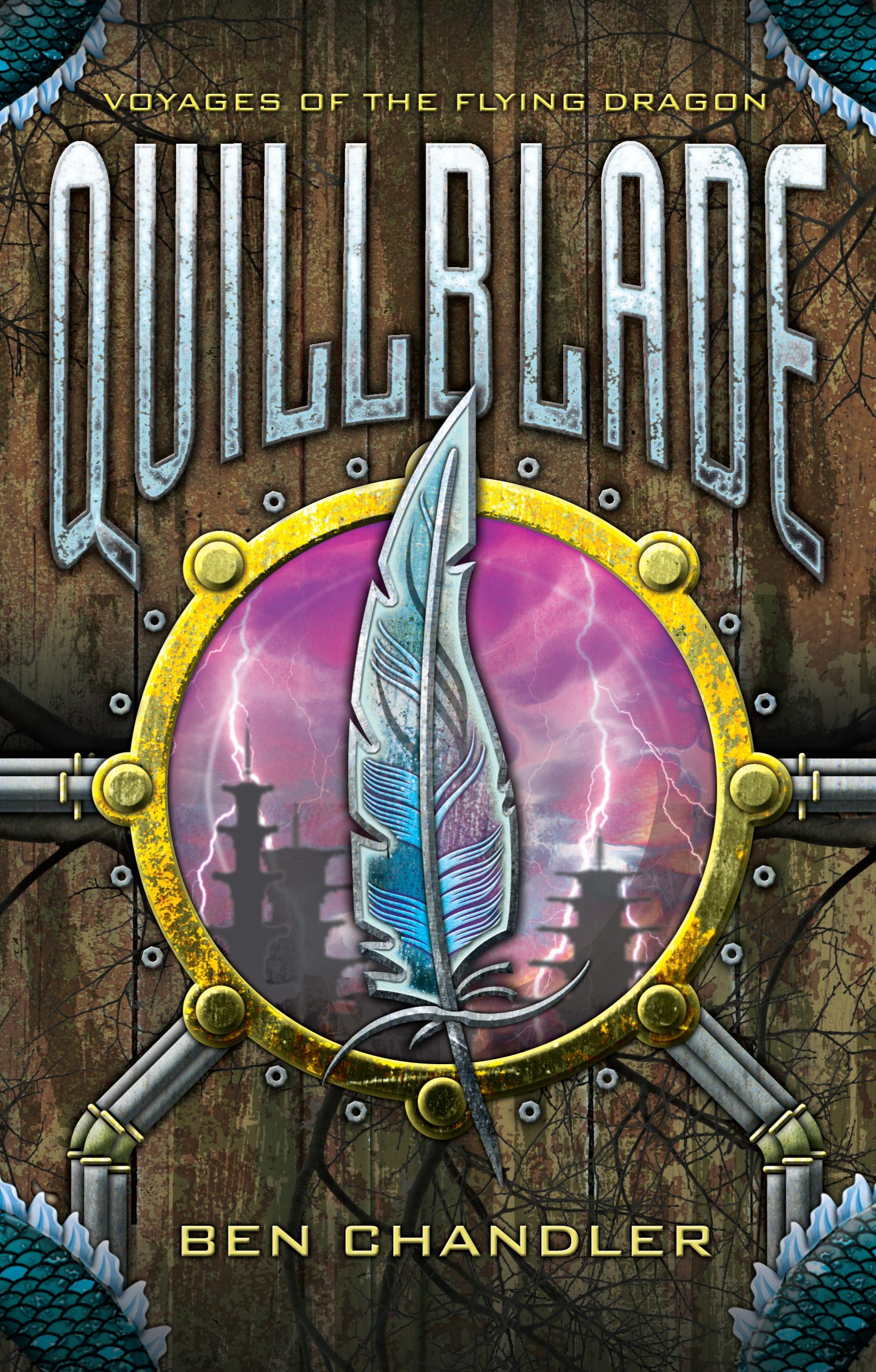
- Free Article: No
- Contents Category: YA Fiction
- Custom Article Title: Kate Eltham reviews 'Grimson' by Deborah Abela and 'Quillblade' by Ben Chandler
- Review Article: Yes
- Online Only: No
- Custom Highlight Text:
Twelve-year-old Isabella and her best friend, Griffin, have been keeping themselves and three younger children alive in Grimsdon since a massive wave flooded the city three years ago
- Book 1 Title: Grimsdon
- Book 1 Biblio: Random House, $16.95 pb, 295pp, 9781741663723
- Book 2 Title: Quillblade: Voyages of the Flying Dragon, Book One
- Book 2 Biblio: Random House, $17.95 pb,416 pp, 9781864719789
- Book 2 Cover Small (400 x 600):

- Book 2 Cover (800 x 1200):

- Book 2 Cover Path (no longer required): images/ABR_Social/9781742741123.jpg
Older boy Xavier crashes into the group’s happy, if perilous, existence, winning over the children one by one with his flying machine and his derring-do. Only Griffin remains aloof, suspicious of Xavier’s heroics and jealous of his growing closeness to Isabella.
Deborah Abela’s background scripting children’s television is apparent in Grimsdon. The snappy dialogue is a highlight, but even her descriptive passages crackle with strong verbs. The characters are constantly plunged into real jeopardy, and Abela shows a flair for set-piece action scenes.
At times a feeling of ‘white room syndrome’ pervades the novel. The post-apocalyptic landscape could be painted in more detail. Some locations are rendered evocatively – the children’s palace, The Haggle where abandoned children play and deal, and Sneddon’s ship – but the larger landscape of Grimsdon and the world beyond the flooded city are only lightly explored. Given that the book’s title emphasises the city itself, more attention on world-building might answer some of the questions posed by the flood disaster. Why are there not more survivors, particularly adults, scavenging in the ruins? Three years after the initial disaster, where is the evidence of recovery efforts? Why would inhabitants of the tent cities be deprived of their liberty?
Grimsdon could be read as a modern twist on Peter Pan, with the reckless Xavier (Peter) tempting Isabella (Wendy) and the children away from their careful routine into adventure, danger and self-discovery, aided by the lost boys of The Haggle. Sneddon completes the cast as the Captain Hook-like character, and a mysterious denizen of the water, the Skelene, replaces the alligator. Grimsdon explores similar themes to Peter Pan, such as the father–child relationship and the end of childhood. Abela also manages to make strong arguments about climate change, without lecturing. Like Peter Pan, Grimsdon roars with adventure and heart. The twelve-year-old inside me loved this book, and the adult did too.
World-building is also problematic in Ben Chandler’s début, Quillblade. While Grimsdon lacked detail and logic, Chandler floods the reader with so much exposition that the pace slows at times to a crawl.
Twins Lenis and Missy Clemens are enslaved Bestia Keepers aboard the Shinzō Warlord’s new airship, the Hiryū. Lenis has a powerful empathic bond with the Bestia, who power the airship through an affinity with elements such as air, light, fire and water, while Missy links the Hiryū with other ships using telepathy. The Captain and crew steal the Hiryū and flee the Warlord’s pursuing ships, bringing them to the edge of the Wastelands and into conflict with the flesh-and-magic demons who dwell within. Lenis is troubled by insistent dreams of Apsilla, the Blue Dragon, who orders him to save her daughter. Missy is gifted with the Quillblade, a talisman fabled to be a feather from Raikō, one of the last remaining Totems, the lords of the Bestia. Upon wielding it in their first battle with the Wasteland demons, Missy’s soul is snatched away by Raikō. Lenis fights to recover his sister and to find answers to why the Wasteland sickness is claiming the Totems and putting them all at risk.
The airships imbue the novel with a steampunk flavour, and so does the cover art, but Quillblade owes more to the influence of Japanese mythology and folklore. Authentic use of linguistics and customs adds depth to the world of Shinzōn and provides a believable cultural fabric in which to wrap the demons and other magical elements.
Quillblade is hampered by overly complicated political and historical background and by a frustrating over-reliance on exposition. As the first in a six-book series, much back-story needed to be covered, but plot and pace fall victim to information dumps and far too many secondary characters. Chandler is clearly proud of the layered world he has created. Having now established the story and main players, we can only hope he will have less need to explain every element of it to us in the instalments to follow.


Comments powered by CComment